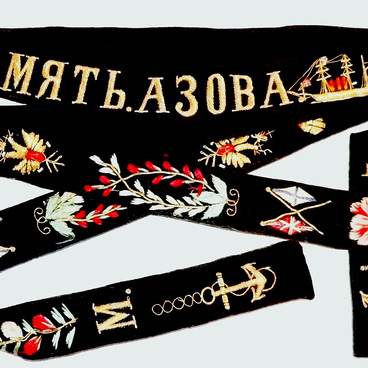A measuring tape is a tool consisting of a narrow tape with indicated units of length. For ease of use, the tape is rolled up in tight rings and placed in some kind of solid body. In ancient times, instead of a measuring tape, people used a long rope with knots tied along the entire length to indicate increments of length. This was wound up on a ‘chelnok’ — an oblong block. The rope was unwound and rewound by hand.
The first versions of a metal measuring tape appeared only in the middle of the 19th century. James Chesterman of Britain invented the measuring tape. In 1865, he figured out how to join together five six-meter pieces of steel tape 3.5 centimeters wide, which he used for measurements. Chesterman wound this tape on a drum and ended up with a compact instrument for large-scale linear measurements, which immediately became very popular.
The casing of this measuring tape wheel from the museum’s collection is brown; it is made of two parts sewn along the edge with a seam forming a horizontal line. On the top cover of the casing there is a mechanism for winding the tape - in order to wind the tape back on the axle, it is necessary to rotate the metal handle. After that, the handle is returned to a special cavity. The axle is surrounded by valves on both sides. At the top of the tape, a folding handle is attached to the valve for rotating the axle. The handle has the inscription “100 Ft”. The ribbon of the measuring tape is pulled through the hole, which is decorated with a metal plate and equipped with two rollers, between which the ribbon passes. The ribbon is pulled out by a special ring. On the leather casing, around the handle, there is an inscription “DEAN BEDINGTON LONDON” on the top, “TRADE” at the bottom in a circle, then a rectangle in which it reads: “DEAN 1”, then “MARK”; below this inscription, is a number — most likely the year of manufacture: 1918
The first versions of a metal measuring tape appeared only in the middle of the 19th century. James Chesterman of Britain invented the measuring tape. In 1865, he figured out how to join together five six-meter pieces of steel tape 3.5 centimeters wide, which he used for measurements. Chesterman wound this tape on a drum and ended up with a compact instrument for large-scale linear measurements, which immediately became very popular.
The casing of this measuring tape wheel from the museum’s collection is brown; it is made of two parts sewn along the edge with a seam forming a horizontal line. On the top cover of the casing there is a mechanism for winding the tape - in order to wind the tape back on the axle, it is necessary to rotate the metal handle. After that, the handle is returned to a special cavity. The axle is surrounded by valves on both sides. At the top of the tape, a folding handle is attached to the valve for rotating the axle. The handle has the inscription “100 Ft”. The ribbon of the measuring tape is pulled through the hole, which is decorated with a metal plate and equipped with two rollers, between which the ribbon passes. The ribbon is pulled out by a special ring. On the leather casing, around the handle, there is an inscription “DEAN BEDINGTON LONDON” on the top, “TRADE” at the bottom in a circle, then a rectangle in which it reads: “DEAN 1”, then “MARK”; below this inscription, is a number — most likely the year of manufacture: 1918

